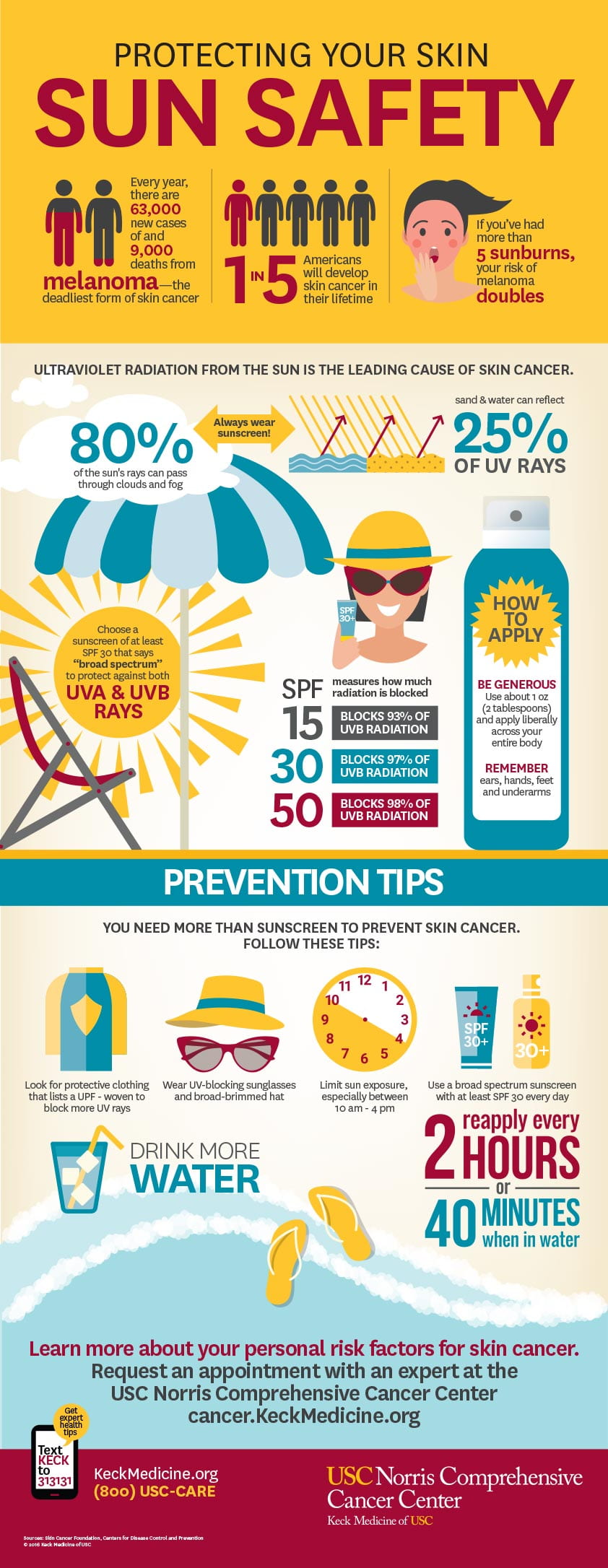Prevent sunburns and reduce your risk of skin cancer by selecting a sunscreen with the right sun protection factor (SPF).
What is SPF?
SPF refers to the sun protection factor, or how well a sunscreen blocks harmful UVB rays, which cause sunburn and play a role in skin cancer. The higher the SPF number in a sunscreen, the more protection it offers.
Broad spectrum sunscreens offer some protection from UVA rays, according to the Skin Cancer Foundation. These rays prematurely age your skin and cause wrinkles and age spots.
Are higher SPF sunscreens better?
According to the American Academy of Dermatology, sunscreen with a 30 SPF will block 97% of the sun’s harmful rays. If you burn easily, purchase sunscreen with 50 SPF or higher, which blocks 98% of UV rays. Unfortunately, there isn’t a sunscreen that will block out 100% of harmful UV rays.
In addition to wearing sunscreen, experts recommended seeking shade, wearing protective clothing or hats, and avoiding peak UV hours.
Sunscreen application: how much and how often?
Many people select the correct SPF but, still get sunburned. There are two reasons: uneven application and failure to reapply. In fact, the American Academy of Dermatology estimates most people apply only 25-50% of the recommended amount of one ounce, or enough to fill a shot glass.
Part of your daily routine should be to apply sunscreen on exposed areas. When at the beach or during outdoor activities, reapply every two hours or more if you will be in the water or sweating.

